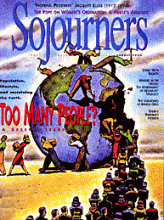The American middle class, more than any other group, defines and embodies the contemporary international vision of the "good life." Yet the way this class of people lives is among the world’s premier environmental problems, and may be the most difficult to solve.
Only population growth rivals high consumption as a cause of ecological decline, and at least population growth is now viewed as a problem by many governments and citizens of the world. Consumption, in contrast, is almost universally seen as good—indeed, increasing it is the primary goal of national economic policy. The consumption levels of the past two decades are the highest achieved by any civilization in human history. They manifest the full flowering of a new form of human society: the consumer society.
This new manner of living was born in the United States, and the words of an American best capture its spirit. In the age of U.S. affluence that began after World War II, retailing analyst Victor Lebow declared: "Our enormously productive economy...demands that we make consumption our way of life, that we convert the buying and use of goods into rituals, that we seek our spiritual satisfaction, our ego satisfaction, in consumption....We need things consumed, burned up, worn out, replaced, and discarded at an ever increasing rate." Most citizens of Western nations have responded to Lebow’s call, and the rest of the world appears intent on following.
The gaping divide in material consumption between the fortunate and unfortunate stands out starkly in their impacts on the natural world. The soaring consumption lines that track the rise of the consumer society are, from another perspective, surging indicators of environmental harm. The consumer society’s exploitation of resources threatens to exhaust, poison, or unalterably disfigure forests, soils, water, and air. We, its members, are responsible for a disproportionate share of all the global environmental challenges facing humanity.
Read the Full Article
